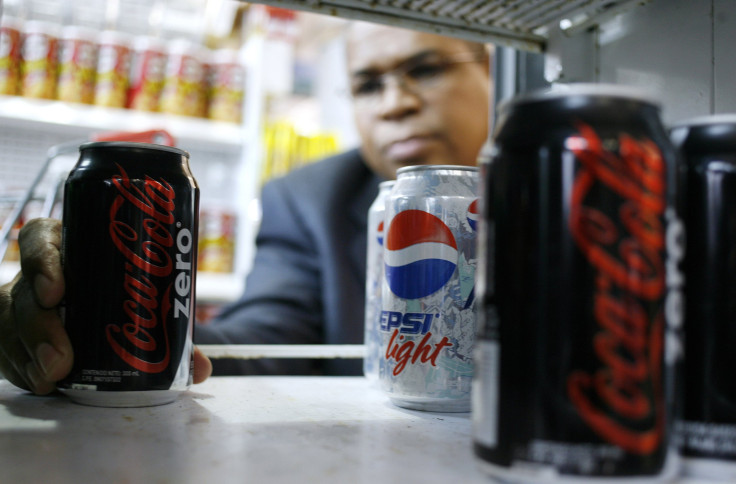High Fructose Corn Syrup Consumption Linked to Rising Diabetes Rates

It's fair to say that in the United States and increasingly around the world, high fructose corn syrup is quickly becoming a staple food, with the sweet-tasting ingredient being poured into everything from soft drink beverages to breakfast cereals to countless processed food items.
Our love affair with high fructose corn syrup (HFCS) may be sweet, but an increasing number of researchers are warning that the romance is taking a toll on our health, blaming the sweetener for everything from the rising obesity epidemic to the surge in cardiovascular, diabetes and liver disease rates.
In the past, researchers have found that the growth of fructose consumption in many developed nations coincides with the increase of prevalence of obesity, and a new study has revealed a similar link to the rising global epidemic of type 2 diabetes.
While the study cannot prove a definitive causal relationship, researchers revealed that as a nation's rate of fructose intake rises, so do levels of type 2 diabetes, showing that diabetes prevalence is about 20 percent higher in countries where the use of the sweetener is high, compared to those where it is not.
Additionally, researchers revealed that the association between high fructose corn syrup intake and diabetes risk remained regardless of total sugar intake or obesity status, suggesting that "corn sugar" may be boosting diabetes risk beyond what other sugars, like sucrose or table sugar, would.
Researchers from the University of Southern California and University of Oxford compared data from 42 countries and found that rates of diabetes were 8 percent in high consuming countries and 6.7 percent among low consumers, which equals to roughly a 20 percent increase in actual number of cases of diabetes.
"This research suggests that HFCS can increase the risk of type 2 diabetes, which is one of the most common causes of death in the world today," study co-author Professor Stanley Ulijaszek, director of the Institute of Social and Cultural Anthropology at the University of Oxford, said in a statement.
Researchers explained that HFCS has a greater proportion of fructose sugar than sucrose, but both contain the same amount of glucose.
HFCS sweetener is widely used in processed foods like cookies and ice cream because it provides greater stability, better appearance and a more consistent brown color after heating.
Researchers said that there is growing evidence that the body breaks down fructose differently from glucose, and that fructose metabolism occurs independently of insulin. It is primarily metabolized in the liver where it can be readily converted to fat, which could contribute to rising rates of non-alcoholic fatty liver disease in Hispanics in the U.S. and Mexico.
"Most populations have an almost insatiable appetite for sweet foods, but regrettably our metabolism has not evolved sufficiently to be able to process the fructose from high fructose corn syrup in the quantities that some people are consuming it," Ulijaszek said. "Although this syrup can be found in many of our processed foods and drinks, this varies enormously from country to country."
The study, published Nov. 27 in the journal of Global Public Health, found that of all the countries studied, the U.S. is the single largest consumer of HFCS, amounting to 25 kilograms per person per year. Hungary came in second at 46 pounds per capita annually, followed by Slovakia, Canada Bulgaria and Belgium. Countries with the lowest HFCS consumption included India, Slovenia, Latvia, Ireland and Sweden.
Researchers stressed that other sources beyond high fructose corn syrup contain fructose.
"Ordinary sugar also yields fructose, as it contains glucose and fructose in a 50-50 mix," researcher Michael Goran, professor of preventive medicine and director of the Childhood Obesity Research Center at the University of Southern California in Los Angeles, told HealthDay. "But the less amount of fructose you consume, the better."
"It's a question of the good, the bad and the ugly, with an apple -- which has about 10 grams of fructose in it -- being good, the fructose in [table] sugar being bad, and the fructose in high fructose corn syrup being the ugly," he added.
However, industry representative Corn Refiners Association, released a statement Monday, before the actual study was even released, condemning the research, saying that it is a "poorly conducted analysis" that is "severely flawed".
Audrae Erickson, president of the Corn Refiners Association, said in a statement that researchers cannot prove a cause-and-effect relationship.
"Just because an ingredient is available in a nation's diet does not mean it is uniquely the cause of a disease," Erickson said.
Looking at the findings from the study, she said that "even though Japan consumes more high fructose corn syrup every year than Mexico, the prevalence rates of diabetes in Japan are about half of Mexico."
"The common sense message for consumers to understand is to watch their intake of all calories, including all added sugars," she said.



























